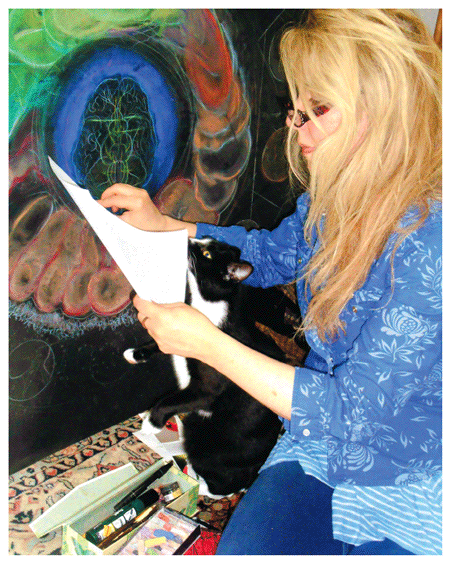The Living World in Eight Mandalas
By Sandra J. Ackerman, Barbara Aulicino, Katie-Leigh Virginia Corder
Caryn Babaian, an artist and a biology instructor, has found a visual format that encourages her students to see and think about the important interactions in biology. Here she explains why the mandala, a Buddhist or Hindu graphic symbol of the universe, lends itself so well to the teaching of biology.
August 10, 2015
From The Staff Art Biology
College-level courses in biology often portray the living world in terms of hierarchies and linear actions: small units group together to form larger units, individuals compete within a species, predators feed on their prey, and so on. Outside the classroom, though, the living world is much messier, because so many of the life forms in any environment are constantly interacting with one another in a complex, delicately balanced system.

Caryn Babaian, an artist and a biology instructor at Bucks County Community College, in Newtown, Pennsylvania, has found a visual format that encourages her students to see and think about these all-important interactions. Here she explains why the mandala, a Buddhist or Hindu graphic symbol of the universe, lends itself so well to the teaching of biology.
Slideshow:
If the slideshow fails to appear in your browser, to view it please navigate here directly:
http://amscimag.sigmaxi.org/4lane/slideshows/2015-08ArtsLab/soundslider.swf
Listen to her full interview about how she creates and views her mandalas:
American Scientist Comments and Discussion
To discuss our articles or comment on them, please share them and tag American Scientist on social media platforms. Here are links to our profiles on Twitter, Facebook, and LinkedIn.
If we re-share your post, we will moderate comments/discussion following our comments policy.